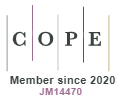Urban arborescence characterization in Vila Maria Baixa’s neighborhood
DOI:
https://doi.org/10.5585/conssaude.v2i0.198Keywords:
arborização urbana, Vila Maria, amostragem.Abstract
The aim of this paper is to measure the qualifying and quantifying characteristics of Vila Maria Baixa’s arborescence in the city of São Paulo, Brazil. The method used was the simple random sampling, being identified 119 blocks in which 10 of them were drew without repeating, establishing the sequence of the variable measurement up to reach the intensity of the sample stipulated (10% limit error and 95% of probability). It was obtained an estimate of 24,42 trees per kilometer of sidewalk with 10,48% variability. Were observed 21 species, irregularly distributed, where only 3 of them represented 58,49% of the trees. The species that stood up the most were mignonette (Lagerstroemia indica), glossy privet (Ligustrum lucidum) and orchid tree (Bauhinia variegata).Downloads
Downloads
Published
2008-01-03
How to Cite
1.
Gonçalves S, Rocha FT. Urban arborescence characterization in Vila Maria Baixa’s neighborhood. Cons. Saúde [Internet]. 2008 Jan. 3 [cited 2025 Jun. 20];2:67-75. Available from: https://periodicos.uninove.br/saude/article/view/198
Issue
Section
Studente Production
License
Copyright (c) 2003 ConScientiae Saúde

This work is licensed under a Creative Commons Attribution-NonCommercial-ShareAlike 4.0 International License.
Views
- Abstract 329
- PDF (Português (Brasil)) 763








